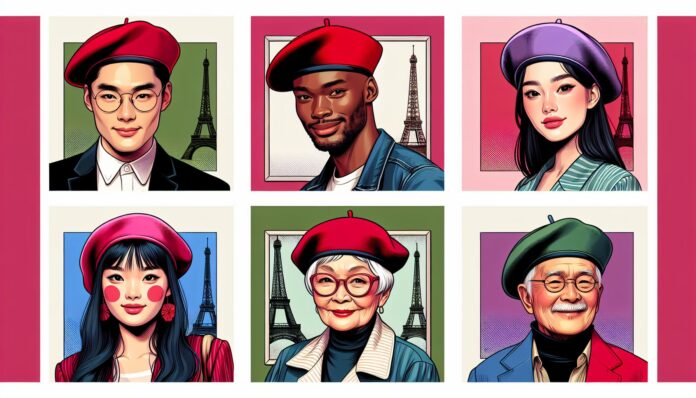If you ask, why do people wear berets in this modern world? The answer cannot be given in a single word or in a single sentence; it lies in its rich history, practical appeal, and enduring fashion statement. A beret is a traditional piece of attire, a small hat made of wool or felt that is worn on the head. Now, it has become not only a practical but also a classic fashion item. But what is so magical about this simple fluffy headwear that is it that attracts people the world over? Let’s discover the primitive roots, artful manoeuvres, and multiple-layered meanings that continue to explain the phenomenon of the beret interest.
A History Steeped in Utility and Style
The use of the beret dates as far back as history cannot track. There is a belief that it, resembles a round cap with a flat top, was worn in many cultures of the ancient world. But the modern hat that we call a beret is primarily linked with the Basque Country of both France and Spain. Originally created from wool or felt, its use was quite functional; it served a practical usefulness to the shepherds and fishermen, as it keep them warm in particularly wet and cold climate.
In the course of the sixteenth century, the beret therefore shifted from functional wear into an emblem of social standing in the working population. The military adopted the beret because this cap is very useful. It was later taken up by the French army in the nineteenth century because of the light weight and sleek appearance which is convenient for any soldier.
A Fashion Staple with Parisian Flair
The beret emerged to fashionable wear from the early part of the twentieth century. During the early part of the 20th century, impressionist painters, writers and other intellectuals wore the beret in Paris, thus turning it into an emblem of rebellion and of the arts. Intellectuals such as Pablo Picasso, Ernest Hemingway, and Simone de Beauvoir having popularised the beret as an iconic symbol of Parisian haut bourgeois bohemian elegance.
Beyond France
Even though the beret can be identified as being traditional French accessory, it has gone beyond its origin. During the twentieth century, the car symbolised car consciousness and social revolution. The revolutionary leader Che Guevara made the beret closely related to political struggle. Many artists and musicians from different countries have worn berets to show their individuality and counterculture identity.
More Than Just a Hat
However, the beret’s popularity stems not only merely in its symbolism. Here’s why it remains a practical and stylish choice:
Versatility: Some of the Most fashionable berets to date are made of wool, felt, leather, straw etc. making them versatile to any season of the year.
Comfort and Fit: The choice of fabric means the clothes feel warm and are comfortable to wear.
Hair Woes Solved: A bad hair day? No problem! A beret can turn an outfit into French chic and at the same time tamer an out-of-control head of hair.
Complements Various Styles: Whether you’re going for a subliminal sexiness or a haute couture look, the beret is not only versatile but historied, with a long legacy of making regular people feel elegant.
Wearing a Beret: Confidence and Personal Style
Finally, the beret has to do with personality because it symbolizes freedom of self-identity. Depending on how one puts it on, either sideways, on the forehead or the fashionable manner at an angle, the beret puts forward your personality.
So the next time you pop a beret onto your head, be careful; it is not just any ordinary headgear. It has become a sign of history, revolution, and art. It works, and it never grows out of fashion. And most importantly, it’s a way to give your own drop of confidence and French savour to your personal outfit.




